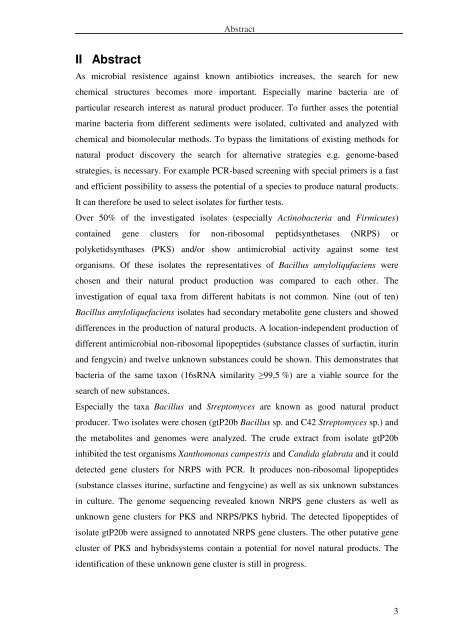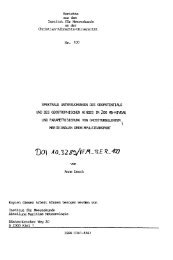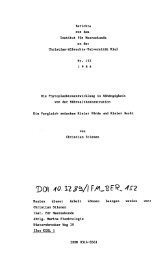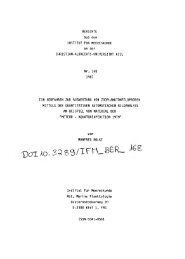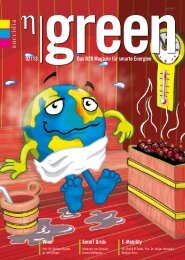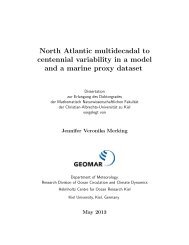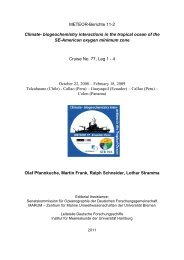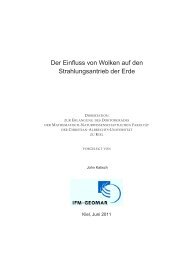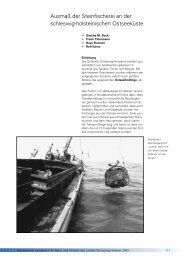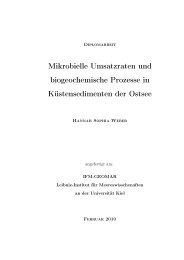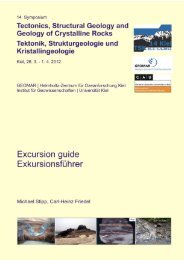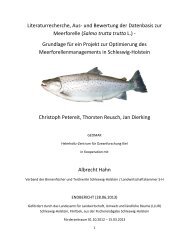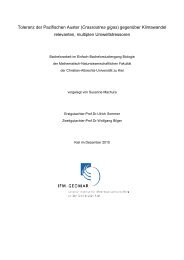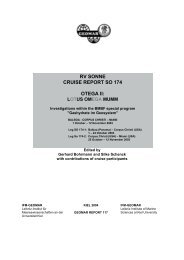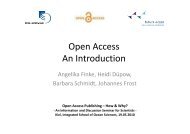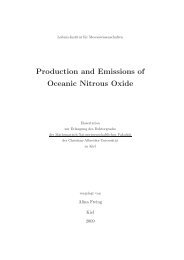Isolierung und Charakterisierung von Bakterien aus ...
Isolierung und Charakterisierung von Bakterien aus ...
Isolierung und Charakterisierung von Bakterien aus ...
Erfolgreiche ePaper selbst erstellen
Machen Sie aus Ihren PDF Publikationen ein blätterbares Flipbook mit unserer einzigartigen Google optimierten e-Paper Software.
II Abstract<br />
Abstract<br />
As microbial resistence against known antibiotics increases, the search for new<br />
chemical structures becomes more important. Especially marine bacteria are of<br />
particular research interest as natural product producer. To further asses the potential<br />
marine bacteria from different sediments were isolated, cultivated and analyzed with<br />
chemical and biomolecular methods. To bypass the limitations of existing methods for<br />
natural product discovery the search for alternative strategies e.g. genome-based<br />
strategies, is necessary. For example PCR-based screening with special primers is a fast<br />
and efficient possibility to assess the potential of a species to produce natural products.<br />
It can therefore be used to select isolates for further tests.<br />
Over 50% of the investigated isolates (especially Actinobacteria and Firmicutes)<br />
contained gene clusters for non-ribosomal peptidsynthetases (NRPS) or<br />
polyketidsynthases (PKS) and/or show antimicrobial activity against some test<br />
organisms. Of these isolates the representatives of Bacillus amyloliqufaciens were<br />
chosen and their natural product production was compared to each other. The<br />
investigation of equal taxa from different habitats is not common. Nine (out of ten)<br />
Bacillus amyloliquefaciens isolates had secondary metabolite gene clusters and showed<br />
differences in the production of natural products. A location-independent production of<br />
different antimicrobial non-ribosomal lipopeptides (substance classes of surfactin, iturin<br />
and fengycin) and twelve unknown substances could be shown. This demonstrates that<br />
bacteria of the same taxon (16sRNA similarity ≥99,5 %) are a viable source for the<br />
search of new substances.<br />
Especially the taxa Bacillus and Streptomyces are known as good natural product<br />
producer. Two isolates were chosen (gtP20b Bacillus sp. and C42 Streptomyces sp.) and<br />
the metabolites and genomes were analyzed. The crude extract from isolate gtP20b<br />
inhibited the test organisms Xanthomonas campestris and Candida glabrata and it could<br />
detected gene clusters for NRPS with PCR. It produces non-ribosomal lipopeptides<br />
(substance classes iturine, surfactine and fengycine) as well as six unknown substances<br />
in culture. The genome sequencing revealed known NRPS gene clusters as well as<br />
unknown gene clusters for PKS and NRPS/PKS hybrid. The detected lipopeptides of<br />
isolate gtP20b were assigned to annotated NRPS gene clusters. The other putative gene<br />
cluster of PKS and hybridsystems contain a potential for novel natural products. The<br />
identification of these unknown gene cluster is still in progress.<br />
3


